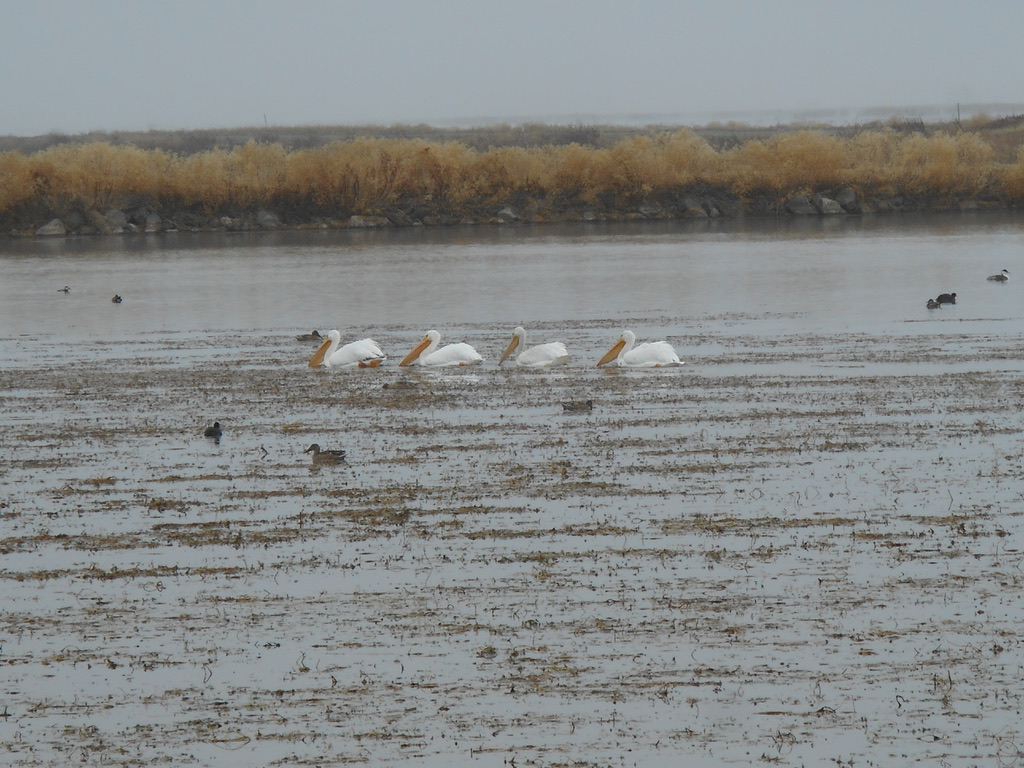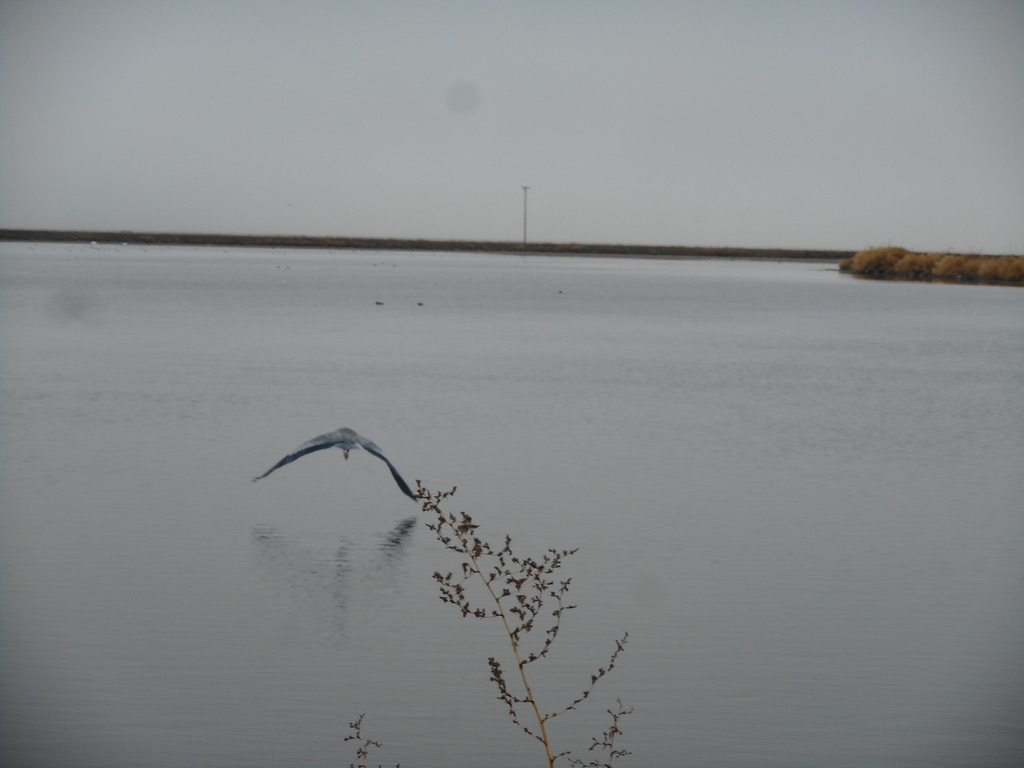
I.
Fog blots the horizon, obscures it even from imagination. The still water of Tule Lake is a reflection so perfect it is invisible, so seamless that we seem to be on an island in a featureless sky, surrounded only by sparse constellations of scattered ducks and loons suspended in midair.
We have come up this morning to see the staging of Snow Geese at Tule Lake, which Barry Lopez, in a 1983 article in Outside Magazine, described as “one of the most imposing—and dependable—wildlife spectacles in the world.” For this I have dragged my wife and nine-month-old daughter out of bed at an unreasonable hour and traveled several hours. Our baby is sleeping in her car seat. My wife is awake, but only barely. In homage to Lopez, and because the fog seems to demand it, Bach’s Cello sonatas vibrate softly from the speakers, drift out my open window, and dissipate into the thick grey ether as we slowly creep along on this narrow strip of dirt along the shore, searching for Snow Geese.
The fog is disorienting. The eyes strain to make some sort of sense out of this hinterland, to discern a horizon between the gray lake and sky. There is nothing to distinguish up from down. To hold on to my reason is a conscious act, as if I might at any second abandon it, pull over the car, climb out, and step off the shore and into the seductive lightness of extinguishment.
The wheels crunch and pop against the dirt. Our unnamed cellist intones a dignified vespers. We drive slowly so as to disturb the birds as little as possible. Many glide away wakeless as we approach. I stop the car in the middle of the road and step out. Despite my tenuous hold on sanity, I must experience the scene directly, without the protection of my car. I walk to the shoreline and look down—not a ripple, not a wave. The land just ends. Even here, the water is indiscernible from fog.
Unlike civilization, nature refuses to be hurried or contained, and the tourist who, peeled away fresh from the city, tries to bend it to his own desires will face certain disappointment. I am not as long removed from the city as I would like.
I want to know, where are the Snow Geese? Lopez describes them as numbering in the hundreds of thousands, “…with a booming noise like rattled sheets of corrugated tin, with a furious and unmitigated energy. It is the life of them that takes such hold of you,” Lopez describes. Here there is only a heavy stillness and the haunting waver of the cellist’s muffled vibrato. I climb back in the car and break the stillness with the start of the engine.
Tule Lake is only a shadow of its former self. Historically, it covered an area nearly one hundred times as large, but like most of California’s marshlands, its water has been drained and siphoned off to irrigate farmland elsewhere. The wildlife refuge that remains supports nearly 200 species of bird, including bald eagles, peregrine falcons, sand hill cranes, owls, ducks, grebes, and geese. For migratory species like the snow geese, it provides a staging area where they gather to store up food and energy for the long flights ahead, either further south along the Pacific Flyway in the fall, or in the spring, to return north to nesting grounds in the arctic tundra.
The road makes a turn from east to south, and we follow a channel that connects the northern and southern sections of the lake. The fog thins just enough to allow a diffuse sunlight through. The birds here are more numerous and diverse. Four white pelicans bob down the channel in single file. I know little about birds—don’t pelicans belong to the ocean?

I stop the car again so my wife can feed our stirring baby. The cello drops silent with the engine and I step out again into the cold, shutting the car door behind me with a heavy thud. Two muffled gunshots echo in the distance—duck hunters. I pad slowly along the edge of the channel toward a great blue heron, approaching from behind, but against the near-silence of the fog, the gravelly dirt grinds like a mortar and pestle. The photo I capture is mediocre, but the noble sound of those beating wings, like a jib unfurling in the wind, will enrich me for a long time to come.

Infants are not in the hurry that we have conditioned into one another. We must wait, and it suits me fine. When you are nowhere, when no one can find you, there are no expectations. In the meantime, I hold those beating wings in my heart, near the gentle cooing of my daughter. Eventually, in her own time, she has her fill and we continue.
The fog pulls away like a magician’s velvet curtain and reveals a brilliant checkerboard of morning, a whole crop of light ripe for harvest. A section begins to ripple and lift up high into the air, white and shimmering like a sheet in the wind, then breaks apart into a thousand pieces that float to earth like dust in a sunbeam.
The cello soars and weaves. My heart sings Credo.
We have found our snow geese.
Ahhh! The cliff hanger! 😛
Muahahaha more to come this week.
I was feeling super stressed out and reading this made me chill out and feel good again. Thank you!
It’s a pretty chill place, I think you’d enjoy it. My pleasure, thanks for reading.